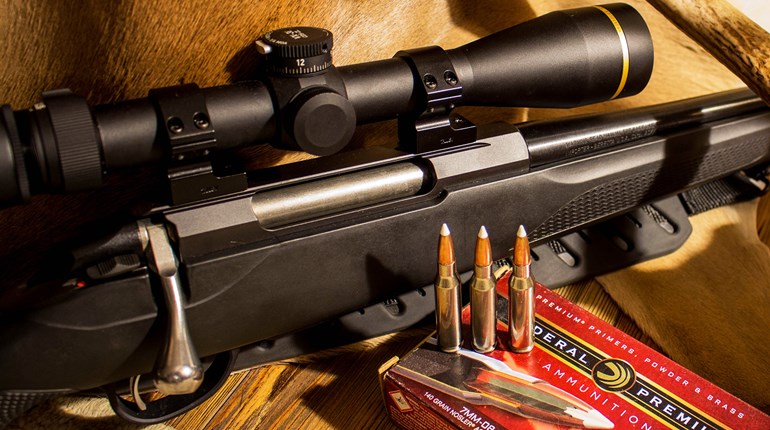
If for some (strange) reason you are looking for a little non-news, we’re happy to oblige: Shooting that is fun doesn’t always correlate to shooting that is necessary. Few things will make this clear like a genuinely thoughtful dedication to the Carry Life.
Sooner or later, those lane-style, paced, bulls-eye shots—even of astonishing accuracy—are not likely to have much place in a defensive, in extremis encounter. An alternative hail of shots is no more desirable, however rapid or “tacticool,” to say nothing of immoral and generally illegal when they go inevitably astray. And then there’s the “just plain stupid” thing in there as well.“Hmmmmmm. There could be lots of situations where only one hand is going to be available to defend myself or others with that firearm.”
It’s also another way to recognize the huge difference between a perfect shot when you wish, versus an acceptable shot when you must. When this sinks in, considerations take on a more serious timbre (like here), and an epiphany quite frequently strikes: “Hmmmmmm. There could be lots of situations where only one hand is going to be available to defend myself or others with that firearm. How does that work?”
Gulp.
Do you put even 1 or 2 percent of your rounds downrange with one hand? Just because almost no one else does either doesn’t mean it’s a good idea. In no particular order, here are just some of the reasons you should think about this in serious terms.
Hand (or hands) occupied – The most common reason for this is that you have something to carry. We’re not suggesting it’s practical to keep one or both hands free at all times, but carry articles only in your weak hand whenever possible. No matter what, your awareness level should elevate: You’re encumbered, and hence an easier mark. Whatever you’re carrying, be prepared to shuck it in a hurry. This gets far more complicated if the burden is a small child, or if you’re helping someone else.
Hand injured – If some sort of engagement has already occurred, you might be injured. It’s astonishingly easy to break or dislocate fingers (been there, done that), and your master/dominant hand is more likely to sustain an injury because it’s the one you’ll naturally prefer to use: Being stronger and more dexterous, defaulting to it is hardly surprising, especially under stress.
Hand in use – Arguably a special case of “occupied” above, either hand may be in use, denying the preferable two-handed grip. We first think of garment clearing here, with the understanding that, “Well, my support hand will be there in a sec!” Maybe, maybe not. If an assailant closes quickly enough, the non-shooting hand may be needed to preserve distance, fend off an attacker’s weapon or prevent fouling of your own draw. The variety of manipulations for which that other hand is needed is theoretically endless, though opening and closing doors seems particularly obvious and—potentially—crucial.One-handed pistolcraft obviously demands adaptations to the press, press, press technique we recommend—believe it or not, there is a way to press with only one hand.
Corners/obstacles/cover – If you really have to shoot, your entire body position will almost certainly not be ideal (remember that business of “getting off the X”), to say nothing of getting to the two-handed grip you’ve practiced so much. Trying to get to any preconceived position has hazards: It’s a delay and a distraction from escaping or ending the threat. Physical circumstances may simply force you to switch hands. (Don’t confuse this with the proper technique(s) for using cover or concealment, however; some of these are surprising and not intuitively obvious. Get trained.)
Carry method – Many of the preceding have ominous implications for carry methods also. Gentlemen: Have you ever tried to draw from that right-hip IWB holster with your left hand? How about that inside ankle holster with the same side hand? (Feel free to time it with a sundial, or calendar.) Ladies: Ignoring the obvious issues with any outer, side-pocket style, that center pocket, horizontal carry purse is probably not, as we say in the biz, full ”ambi” either. It can provide good access from either shoulder, but not necessarily from the same orientation. Do you remember to check that the orientation is what you’ll need/expect if danger appears? Each time you throw it over your shoulder, or when you change the shoulder you carry it from, are you sure how to get to that firearm?
Which brings us squarely back to where we started—a type of shooting that few do well or correctly, and that fewer still enjoy.
There’s an understandable tendency to simply drop a hand and blast away. And after a fashion, this will work. But with anything much beyond rimfire, accuracy takes a beating—often to the point of being unacceptably dangerous, and speed (remember the wish/must trade-off), well, isn’t.
It’s actually a good idea to try this, and see what you think. Especially when you move the pistol to the weak hand, it becomes pretty obvious that just any old point-n-pull won’t get much done. You’ll likely get surprisingly few holes—or at least holes where you want them—for a lot of smoke and racket.
Before a full-blown snit ensues, let us reassure you: We make no suggestion of a return to 19th-century “blading,” abandoning hard-won Weaver/Isosceles and bent elbows willy-nilly along the way. But one-handed pistolcraft obviously demands adaptations to the press, press, press technique we recommend—believe it or not, there is a way to press with only one hand. Odder still, stylized Hollywood malarkey gives an amusing hint of what else may need to change to get and keep a single hand running the pistol.
For now, Carry on.
Read Part II here


































